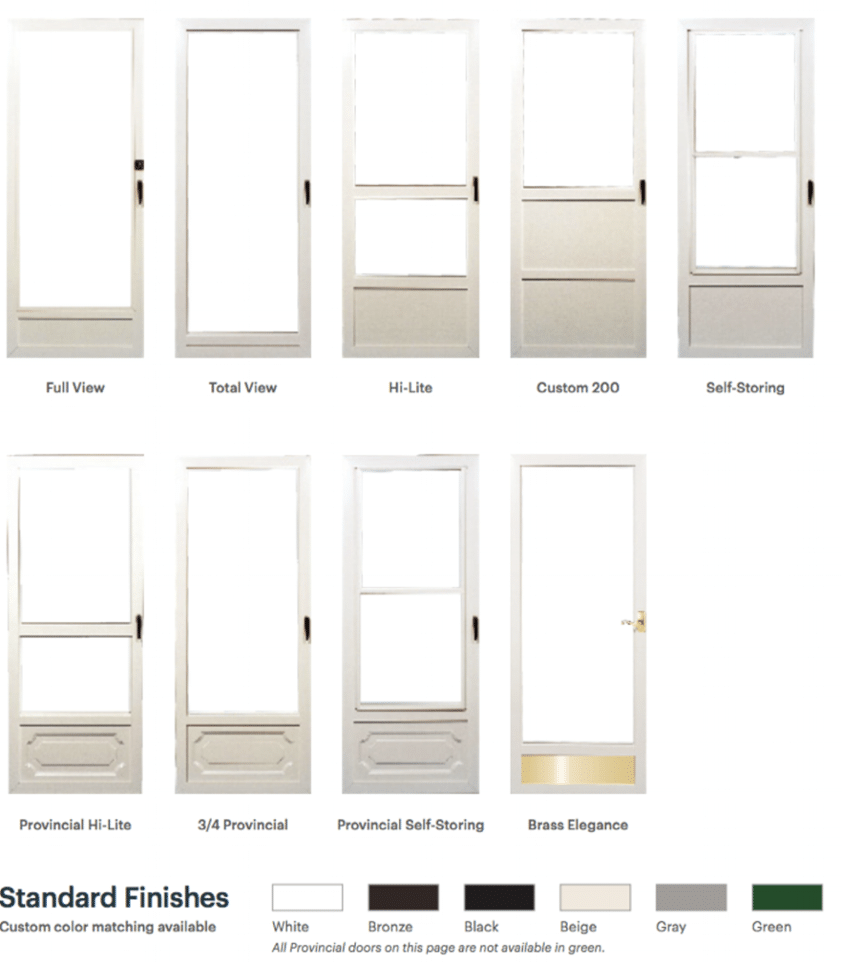Residential storm windows are designed to protect your primary windows and your property from the elements. Storm windows also help improve home efficiency in direct relation to their U-factor (i.e. rate of non-solar heat flow).
Keeping your storm windows in good condition helps them last longer and perform more efficiently for the purposes they were designed. Additionally, with exterior storm windows, you’ll maintain your home’s curb appeal with regular cleaning and care. Consider the following care tips for removing, cleaning and maintaining your residential storm windows.
Removing Storm Windows
Interior storm windows are easier to remove since you don’t have to fuss with ladders and the outdoor elements. Removing exterior storm windows may still be a do-it-yourself task by taking it step by step and following safety precautions. However, if you haven’t removed and cleaned your exterior storm windows in recent seasons or years, it can be a tricky job -- especially if you have older storm windows.
Following are common types of storm windows:
- Interior: Aluminum or vinyl storm windows with a thin, single glass pane are generally used inside the home. These types are held in place by metal or plastic tabs.
- Exterior wood frame: Older storm windows are commonly made of wood with a single glass pane. These types are held in place with metal lever screws or snaps.
- Exterior aluminum frame: More modern storm windows are manufactured from aluminum. Using a triple track configuration, these types of storm windows often use two glass panes (one operable) and a removable screen. Aluminum track storm windows are popular with double-hung windows and may slide open to allow fresh air ventilation during moderate weather in our Warwick, Rhode Island area.
Your personal safety is the most important factor when removing and caring for your storm windows. There’s always a risk of dropping the windows and shattering glass. Wear protective goggles and long sleeves. Use leather work gloves to ensure a tacky grip and to protect your hands from scrapes and cuts. It’s also a good idea to have a helper -- especially if you are using a ladder to reach high first-floor windows, or second floor windows and higher.
Following are more tips when removing storm windows:
- Labeling: Before or immediately after removing a storm window, use sticky notes to label each window so you may put them back in their original place.
- Tools: Wood frame storm windows are susceptible to warping and swelling, which can make them difficult to pry loose. Frames that are painted over can be troublesome, too. Have a utility knife and putty knife handy to score painted edges and pry the frames loose.
- Loose frames: Be mindful of loose frames in older aluminum storm windows. Loose frames may fall away from the glass when removed.
- Damaged windows: Thoroughly inspect each window before removal. It’s very dangerous to remove storm windows that have cracks, scratches or chips. A simple scratch in a glass pane makes it 100 times weaker and is more likely to break with the slightest amount of pressure. If you do indeed have one or more cracked storm windows, it’s wise to consult a professional for removal and replacement.
Cleaning Interior Storm Windows
Prepare an area in your home or garage to place the windows vertically and as square as possible against a wall. Place the storm windows on towels to catch dripping cleaner and water. Check each pane for damage and snug fit. Loose or brittle putty and sealant should be repaired.
The basic tools you’ll need for window cleaning are a squeegee, pliers for stubborn tabs, soft cleaning cloths or paper towels, a soapy ammonia mix or standard household window cleaner. A squeegee is preferred to hand-wiping windows because you may apply less pressure with a squeegee, which prevents damage to the window and gets better results. Allow the windows to thoroughly dry before reinstalling.
Cleaning Exterior Storm Windows
Exterior storm windows may be permanent or removable. If you are removing exterior storm windows for cleaning and maintenance, make sure you follow the aforementioned safety precautions. Check the owner’s manual of your storm windows. You may be able to remove the glass panes from inside your home by locating the spring-loaded release mechanisms. This is safer and easier than using a ladder to access and remove higher windows.
Remember or mark each window so you may reinstall each to its original location. Use caution when removing the screen on sliding triple-track aluminum storm windows. The top glass pane may come crashing down if the screen was holding it in place. Again, it’s wise to have a helping hand assisting you. Additionally, be mindful that exterior storm windows are typically much heavier than interior storm windows. They may also be more stubborn to remove due to swelling or paint.
Use the same steps for cleaning exterior windows as interior windows. However, you may use your home’s exterior wall to stand the windows upright if you are removing windows from outside your home. When accessing higher windows with a ladder, tie off your squeegee with a rope. This will save you trips up and down the ladder if you drop the squeegee. For heavily soiled storm windows, pre-wash by spraying them with a garden hose.
Maintenance and Troubleshooting
Aluminum track storm windows are more durable than older wood frame storms. However, aluminum storm windows aren’t maintenance-free. They still need care from time to time, such as scrubbing and lubrication, to maintain smooth operation for ventilation and home safety.
Combination storm-and-screen windows have three movable panels (two glass panes and one screen) that slide up and down using tracks. During the fall and winter, the two glass panes should be adjusted to create a full-length storm window. During the spring and summer, one glass panel may be slid up or down to create a half-window which allows for ventilation. The screen is slid into place to prevent pests and larger debris from entering your home.
The primary maintenance needed to keep your storm windows in great shape is cleaning and scrubbing away the debris that becomes lodged inside the tracks. Blockages in the tracks make opening and closing your windows more difficult and may potentially cause damage to the glass. Additionally, oxidation may occur on the spring-actuated catches that hold each pane and screen in place.
The basic tools you may need to clean the tracks are a vacuum cleaner and extension, blue non-abrasive scouring pads, latex gloves, protective eye-wear and moisture-displacing penetrating lubricant. You may use the vacuum and brush or narrow extension to remove loose dirt and debris from the tracks. For tough caked-on debris, you may need to use a non-abrasive blue scouring pad and soapy water to loosen and remove blockages.
Spray the spring-actuated catches with a moisture-displacing penetrating lubricant each year. Otherwise, you may find it impossible to open your storm windows, or properly secure them when they are open to prevent them from sliding down.
With so many benefits of properly maintaining your storm windows, it makes sense to take care of maintenance this season and annually thereafter. However, if you feel uncertain about any of the preceding steps, please contact a window expert for more information or assistance.
Subscribe to ProEdge Remodeling's Blog





